How was the miracle created by scientists in their lab?
From Cinderella to Aladdin and the Magic Lamp, every fairytale miracle happens after dazzling light. Aladdin had his first luxurious meal in his life with 12 silver plates. The Cinderella had a carriage made of pumpkins, white horses of four white rats, and a lavish evening gown made from the heavily ragged clothes she wore.
All of this is magic! But can scientists replicate this magic in their own laboratories? Imagine that they create a beam of light and that this beam of light can transform one matter into another.
Indeed, a 21st century alchemy – can in principle turn lead into gold, turning all ordinary materials into precious matter like superconductors.

For decades, scientists have wanted to bring these ideas to life by interfering with the electron clouds of atoms and molecules. As we know, atoms and molecules have different number and distribution of electrons which determine the properties of all materials.
The idea is that if scientists could interfere and change this electron cloud, scientists could turn any object into another as well. “Basically you can make everything look what you want,” said Dr. Gerard McCaul of Tulane University in New Orleans.
He and his colleagues are currently developing a strategy of using laser light with short pulses to rewrite the chemistry of matter. Can this technology turn a pumpkin into a car?
Theoretically, what this technology can do is only limited by our imagination. Let’s see how miracles were created by scientists in their laboratories?
Behind the lights
Shortly after the invention of the laser in the early 1960s, many researchers quickly realized that this light-generating technology contained extremely powerful power. Since electron clouds can sense and react to electromagnetic fields surrounding the laser, these rays of light can essentially be used to control individual molecules.
But to actually manipulate something, the necessary condition is that they must be able to maneuver in times less than the orbital change of an object. In a simple and easy to use way, you have to be quick enough to catch it first.
Imagine how fast your strikes would have to be to catch a mosquito flying in front of you? For molecules and electrons, it’s an extremely, extremely short period, and much shorter than that.
Laser technology of the 1960s was simply unable to generate pulses short enough to provide a fast enough sequence of effects on molecules and electron clouds. The dream of alchemy by lasers was then forced to postpone.
The world’s first laser generator alongside the two scientists who invented it: James P. Gordon on the right and Charles H. Townes on the left.
However, in the late 1980s and early 1990s, thanks to newly improved laser technology, scientists were able to reduce pulses of light rays to a femtosecond threshold (one femtosecond equals 10 to 15 seconds). , close to the duration of atomic motion.
The broken limit allowed them to use lasers to selectively excite and probe the movement of atoms. In the early 1990s, Herschel Rabitz, a chemist at Princeton University and his colleagues, demonstrated that humans can control movement below the atomic level using the pulse-shaped laser.
Pulsed lasers are complex waveforms that can guide molecular behavior in specific pathways. Fortunately and coincidentally, laser pulse shaping technology was developed around this time in optical telecommunications to generate signals that could be transmitted in fiber optic cables.
The only big challenge that remains now is knowing the trajectory of a molecular system, with its components as small as they are quantum.
To control the path of a large object – like a paraglider – you need to know its path. For a quantum mechanical system, this is equivalent to knowing how the wave function develops over time defined by a mathematical function called Hamilton.
Knowing the Hamilton function means that you will know the path of the quantum particle to capture it. But the problem is that in all quantum systems – except the simplest one like the hydrogen atom – Hamilton is a very complex function. It’s so complicated that it’s difficult for researchers to accurately calculate the dynamics of the wave function.
In the absence of the Hamilton function to pre-calculate the control pulse you need, the only alternative is test and error: the scientists will try some of the control pulses initially, then repeat them while running same test again.
Imagine a paraglider pilot learning to land by trying out random joystick movements, then gradually refining those movements as they see them in action.
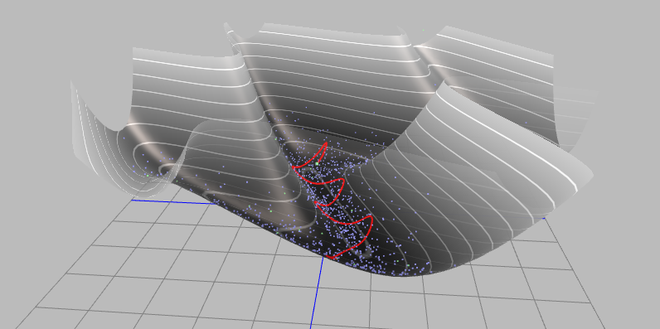
The Hamilton wave function of a very complex system of matter.
But trial and error on a quantum system is much more complicated, though a little less dangerous than life. To use pulse shaping technology, you will need to add more frequencies to the laser system.
The challenge is which combination of frequencies is correct. “It’s like a piano, more than that, because it has about 128 keys,” says Rabitz. Pulse shaping today can involve a thousand or more frequency components.
To make this possible, Dr McCaul is working with Denys Bondar of Tulane University to describe a theoretical scheme that pre-calculates the laser pulses needed to interfere with the material.
In quantum mechanics, a specific property of a substance – for example its conductivity, transparency or optical reflectivity – corresponds to the average or the “expected value” of an observable quantity. If you have a wave function of a substance and you know what kind of light pulses you are using, you can predict the outcome – the expected value – that you have after you project them.
The Bondar team reversed the problem: you can now start with the result you want to achieve (the expected value) and calculate the pulse of light that will produce it. To do this, you also need to know the wave function of the system, or its Hamilton equivalent – a task previously considered impossible.
But that’s okay, as long as you can figure out a good enough approximation: some kind of wave function “model” close enough to capture important characteristics of real waves.
In this way, the researchers found a way to manipulate the electron cloud to denature it from a small set of molecules to large bulky solids with a sea of electrons flying around them.
“We see the system as a cloud of electrons and we start to distort that cloud,” says Bondar. “The control pulse creates a pre-designed path that the electrons are forced to follow, so the approach is called trace control.”
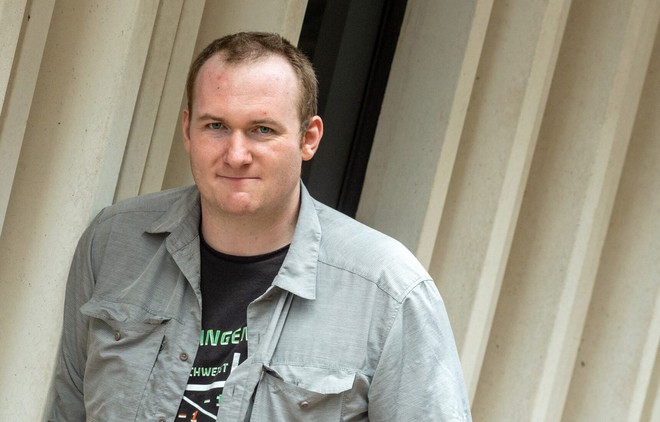
Gerard McCaul, theoretical physicist at Tulane University, showed exactly what types of light pulses are needed to change the properties of materials.
Christian Arenz, theoretical chemist in Rabitz’s group at Princeton, explains that this approach makes it possible to find a more suitable control field, which allows scientists to manipulate the properties of a substance is much easier.
“I think this work will inspire a lot for future methods of material control,” said Arenz. Basically they got their hands on a technology that turns one thing into another.
Reshape a solid block of material
The technology we are talking about here is called “coherent quantum control” – QCC, or control of quantum kinetic processes with light.
Most of the early research in this area was aimed at making obvious changes in individual molecules. Scientists, for example, could energize a certain chemical bond to vibrate it to the point of rupture and thereby control the chemical reaction that occurs.
The goal now – controlling multiple electrons in a material at once is a much more difficult challenge.
When atoms bond together in a solid, the outermost electronic layers of atomic shells overlap and form “bands” that cover the material. The electronic and optical properties depend on the properties of these bands themselves.
In metals, for example, the electrons with the highest energy occupy space in an unfilled band. This is why electrons can move through the atomic lattice. Having the current shifted means that the material can conduct electricity.
While with insulating materials, the highest energy region occupied by electrons is completely filled, so there is no longer “space” for these electrons to move. They are permanent on their atoms and the material will not be electrically conductive for this reason.
More exotic types of electron behavior can result from quantum mechanical effects that make the movements of electrons interdependent (i.e., correlated), such as the movements of more intimate groups. A crowd.
For example, in superconductors (with almost zero resistance), the electrons with the highest energy form a correlating pair (called a Cooper pair) that moves in synchronization even though the two electrons may be separated by one. distance. . It’s like a person chasing another person in a crowd.

The movement of the Cooper pair in superconducting materials.
These Cooper pairs all behave the same, giving them an unstoppable boost. This makes the superconductivity of materials superconducting, in which electric current can be transferred without any resistance as if the electrons no longer perceive the underlying crystal lattice of the nucleus. atom. The amount of energy wasted when transferring electricity is also almost zero.
The problem is that superconducting materials are scarce. Usually to find them you have to fish in a sea of permutations of different elements. The search for superconducting materials is therefore very slow and laborious – it requires an enormous amount of time and effort devoted to the development of new superconducting materials.
Now imagine that with a laser magic wand in your hand, you can transform an ordinary material into a superconducting tissue, thanks to pulses of light that help redistribute electrons in their metallic lattice.
According to this idea, the structure of the electron band is not something fixed by the material itself. Instead, these strips become a paste that can be molded into any shape you want.
For example, you just need to find a suitable laser pulse to be able to connect a series of moving electrons into Cooper pairs. This way you can turn any cheap material like iron or copper into a superconducting material, something even more expensive than gold.
George Booth, theoretical physicist at King’s College London, explains that some early studies extend this application to the field of solids, where there are strong electronic correlation effects.
The limits of variables
At this point, you might think that this method can actually only simulate the appearance of an object. It looks like fraudulent alchemists who claim to create gold but only denature the surface of another metal, making it feel like cast gold but inside old cheap metal.
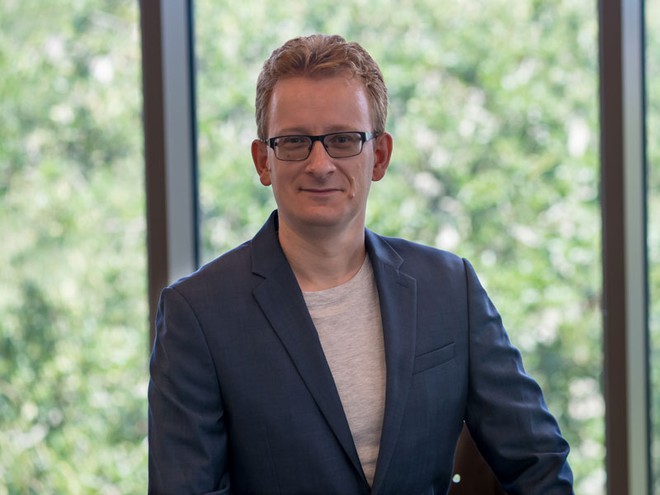
Denys Bondar, theoretical physicist at Tulane thinks that it is possible to perform a quantum multiplier analysis algorithm in an optical computing device.
But Bondar disagrees, saying the transformation brought about by light is “really fundamental.” In order for an alkali metal atom (such as sodium) to mimic the optical properties of another metal atom (such as rubidium), you must use a control beam to manipulate the dipole moment of the atoms – it manipulates the distribution charge of each atom in a heterogeneous space, determining its interaction with the electric field of light.
“The dipole moment affects other things – including some chemical properties,” says Bondar. Therefore, this transformation is not just a change in appearance, it also has a more profound effect on the nature of matter.
However, that doesn’t mean that 21st century alchemists can use lasers to turn any substance into another. Michael Först, a physicist in the Structure and Dynamism of Matter Research Unit at the Max Planck Institute in Hamburg, Germany, believes this technology is only viable for creating behaviors in capable materials. exist under certain conditions.
This means that “we can’t mimic the behavior of a material if it doesn’t exist at all,” he said. “The properties that want to exist in equilibrium must include a condition – such as a different temperature or pressure or in a different magnetic environment – where the material retains its properties. that you are looking for “.
This means that in order to pay the price for a property of a material, you have to place it in another parallel world where properties like pressure or temperature don’t match the real world. outside. Imagine, you could turn lead into gold in a transparent box inside which the temperature could be minus hundreds of degrees Celsius and the pressure could strangle your neck.
It also means that you can only see the gold coin in the box and you really cannot touch or own it. If you break the glass box, the gold will turn back to lead. This ensures that our world can survive without being inflated by an alchemist.
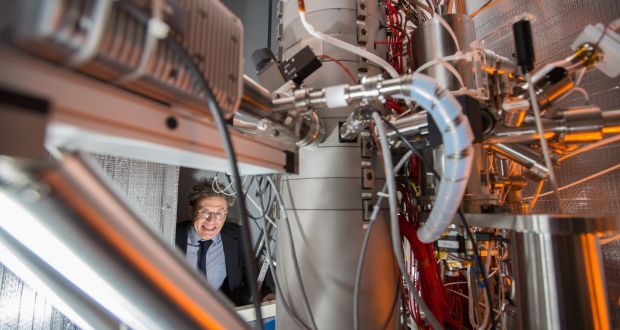
You can only see the gold coin in the box and really can’t touch or own it
At this point, you may be wondering what the ultimate goal of laser alchemy technology is, if it is not used to turn lead into gold?
In fact, the researchers are only trying to awaken the potential properties of the material itself, which already has this property but not at atmospheric pressure or room temperature. .
Först, for example, is now working experimentally to create the superconducting effect that is excited by light. The problem is not to create superconductivity from scratch, but to bring the material to a higher temperature under the conditions where it is naturally superconducting.
“Our pulse of light woke him up,” Först said. Michele Buzzi, a Först colleague at the Max Planck Institute agrees: “You can access very interesting states of a material with this technology, but I’m not exaggerating that you can. take a material and turn it into something completely different. “
Christiane Koch of the Free University of Berlin, a researcher of quantum control methods for multiple particle systems, argues that actually transforming a material at an elementary level, rather than letting it emulate one. superficially a particular reaction, researchers will have to dive deep into the electron clouds.
This would require laser beams of very high energies, in order for the intensity of the associated electromagnetic fields to match the internal forces that shape the intrinsic electronic structure. It’s probably still a viable goal, it’s just that it’s very difficult, Kock says.
What is the application of this technology?
No matter how successful the strategy is, an object’s changed properties will persist as long as you throw a laser at them and place them in a parallel world under certain conditions. Take them out of this magic glass box, the electronic structure of the material will return to its original state.
It might not seem like a big deal to someone who wants to turn lead into gold, but it really doesn’t matter in some areas of application, such as electronics. Scientists only need to transform the properties of the necessary material for a short time – this is enough.
One potential application of “coherent quantum control” technology is optical computing.
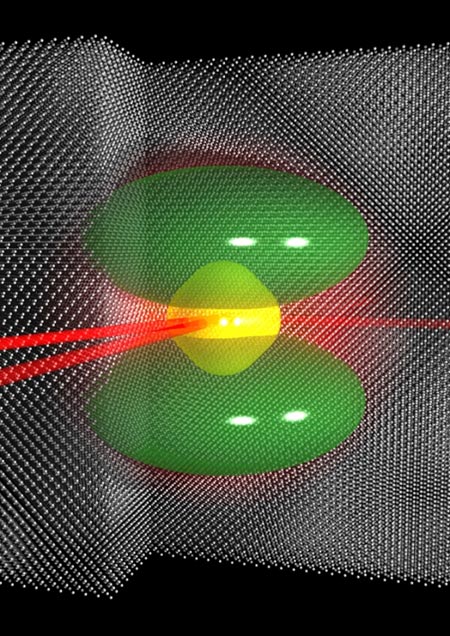
In principle, Bondar said, light is the most wonderful thing that humans have today to carry information in computers. Think of fiber optic technology instead of copper, using light instead of electronics.
You can cram a lot of information into light, using several different wavelengths at the same time. The transmission line is therefore pushed at a very high speed, with very little waste. But light also has weaknesses compared to electronics.
“Unlike electrons, light hates to interact with light,” says Bondar. This limits the ability of light to encode information itself, preventing it from reaching its full potential.
Now, with Coherent Quantum Control, Bondar says he can overcome this weakness. This technology could make it possible to produce a piece of matter, in principle as small as an atom, controlled by a laser beam. A second beam containing incoming data will interact with matter. This data conversion interaction can be used to perform a calculation.
“This paves the way for single-atom computing,” says Bondar. This computer technology can calculate much faster than conventional electronic computers in use.
To go further, Bondar and McCaul believe they can implement a quantum nucleus analysis algorithm called Shor’s algorithm, one of the first algorithms proposed for quantum computers.
McCaul also hopes to be able to use “coherent quantum control” technology to analyze complex chemical mixtures. Analyzing the composition of synthetic narcotics is a challenge for chemists today.
Usually, chemists find a particular substance in a mixture by its spectrum – the spectrum of a substance is characteristic, it represents the frequency of the light it absorbs. “But the spectra of the compounds may look similar, so it would be difficult to analyze a compound with many components,” McCaul said.
The new technology could now help chemists “turn off the optical reactions of each substance”, making them selectively invisible. In principle, it can be done, McCaul said.
Therefore, add the ability to turn something invisible into a 21st century alchemist’s power set, where scientists instead of using a magic wand will hold a magic laser pen in their hand.
Wired


